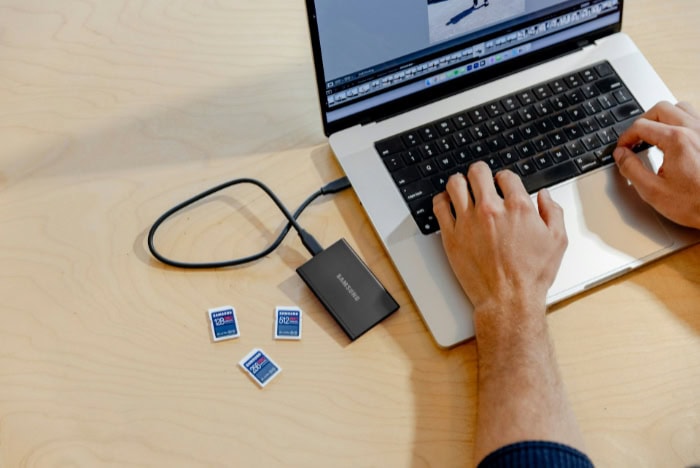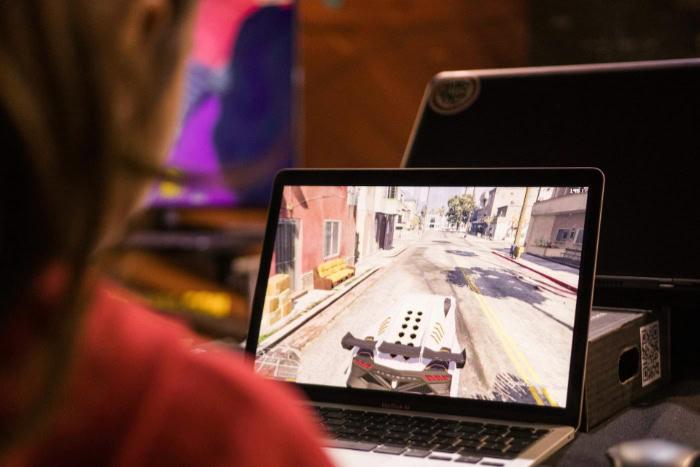Is 2TB of Storage Enough? Everything You Should Consider

Hoarding terabytes of data is easier than ever, but choosing the right amount of storage can still be a puzzle. Is 2TB the sweet spot for your digital life, or might it fall short sooner than you think? For students balancing assignments and Netflix, gamers downloading massive AAA titles, or creators working with high-res video and RAW photos, storage needs can vary wildly.
Deciding if 2TB fits your workflow means thinking about what you store now, what you’ll need next year, and how you use your devices day to day.
Capacity Breakdown
Storage needs today can feel overwhelming, especially with media files and software ballooning in size. A 2TB drive sounds enormous at a glance, but real capacity depends on the types of files stored, how modern apps behave, and system requirements that quietly consume space.
Media Storage Benchmarks
Photos and videos quickly eat up storage, but the actual space required hinges on format and resolution. JPEG photos, which are highly compressed, tend to take up much less room than RAW images from professional cameras.
On average, a single JPEG from a smartphone typically ranges between 2 to 6 MB, meaning a collection of up to 330,000 photos can easily fit on a 2TB drive. RAW files, preferred by photographers for their detail and flexibility, are usually between 20 and 50 MB each, bringing the total to around 40,000 to 100,000 high-quality shots.
Videos consume even more space, especially with modern smartphones and cameras recording in high definition and beyond. An hour of full HD (1080p) video can take up roughly 5 to 10 GB, while an hour of 4K footage may require about 20 to 30 GB.
For those interested in 8K content, a single hour can soar past 100 GB. If your media library is video-heavy, 2TB can hold about 200 hours of HD video, around 65 hours of 4K, or just 20 hours of 8K in high-bitrate formats.
Application and Game Capacity
Modern software and video games have grown significantly in size due to advanced graphics, DLCs, and complex assets. AAA video games, which are among the largest consumer applications, can range from 40 GB for lighter titles up to 250 GB for blockbuster releases with extensive updates and mods.
A typical mix of modern games, say 15-20 titles, can occupy over 1TB, especially with add-ons and user-generated content.
Creative suites such as Adobe Creative Cloud or professional video editors can also occupy hefty chunks of space. A full installation of Creative Cloud with popular apps like Photoshop, Premiere Pro, and After Effects regularly exceeds 20 GB.
Adding large project files or media assets for editing, the storage requirements can escalate rapidly. Productivity tools, such as office suites, are less demanding, often consuming less than 10 GB in total.
System Overhead
Not all of your 2TB is available for personal storage. System overhead refers to the hidden bites that go toward your operating system, drive formatting, and reserved partitions.
File systems like NTFS and exFAT, necessary for managing files and security, typically result in a loss of a few percent of raw space. Formatting a “2TB” drive usually leaves you with about 1.81TB of usable storage due to how computers define a terabyte and reserve space for system files.
Modern operating systems such as Windows, macOS, or Linux can require between 15 and 30 GB just for installation, with updates and cache files gradually taking more. Recovery partitions, hibernation files, and system restore points add further overhead, which is important to factor in before planning large installations or content libraries.
As a result, out of a 2TB drive, a chunk will be unavailable from the very beginning, reducing the amount you can dedicate to your apps and personal data.
User-Specific Suitability Assessment

Deciding if 2TB of storage fits your needs often comes down to the ways you use your computer. Gamers, creators, and office users approach storage differently, both in scale and in the types of files they work with most often.
Assessing 2TB from each perspective shows how quickly space can fill up, or how much room you might have to spare.
Gamer Profiles
For avid gamers, storage requirements can vary wildly based on the size of their digital library. Modern AAA titles have grown much larger, with flagship releases sometimes topping 150 GB each.
Installing a dozen of these blockbuster games, plus the regular updates they receive, can easily eat up over 1TB. Gamers who enjoy rotating between a wide selection of titles or who participate in sales and bundle deals may find 2TB filling up faster than expected.
Mods introduce another wrinkle. Many popular games have active modding communities that release huge add-on files, graphics packs, and custom maps.
For titles like Skyrim or Grand Theft Auto V, storing high-resolution texture packs and large mod installs can significantly increase space demands. While casual gamers with a small library will find 2TB more than sufficient, those who collect games, mods, and expansions might soon crave more headroom.
Content Creator Workflows
Content creators face unique challenges, as their work tends to generate massive, high-quality files. Photographers working with RAW images often shoot thousands of files per project, and each file can take up 25 MB or more.
A single event or shoot might require tens of gigabytes, and keeping archives for multiple clients or personal projects will quickly make a 2TB drive feel smaller.
Video editing brings even larger demands. Footage shot in 4K or higher can use up storage at a staggering rate.
A 10-minute 4K video project might start at 10 GB, but editing workflows also generate temporary cache files and rendered previews, sometimes outpacing the size of the original footage. Keeping several ongoing projects, plus a vault of completed work, means 2TB is workable for light or occasional use, but committed filmmakers or YouTubers may need to supplement their drive with cloud or external storage for long-term growth.
General and Office Use
Most office users and students work with documents, spreadsheets, presentations, email archives, and perhaps some photos and light videos. These files are relatively tiny compared to games and creative projects.
Spreadsheets and word processing files rarely reach a megabyte, and even a large stash of emails or PDFs barely dents a terabyte.
For those who use their computer mainly for writing, web browsing, online research, or streaming media rather than downloading, 2TB offers more space than most will reasonably use. Occasionally storing family photos, music albums, and a handful of movies or TV series will barely make a dent in available storage.
For this group, the main concern is rarely running out of space, but rather keeping files organized and backed up safely.
Technical Constraints and Compatibility

Selecting a 2TB drive brings more than just questions of capacity. The way the drive is formatted and integrated with your system can directly impact how effective and reliable that storage will be.
Partition tables, file system choices, and the design of the drive, whether solid-state or traditional spinning platters, all contribute to the user experience.
Partition Limitations
Drive partitioning determines how a storage device’s capacity is allocated and managed by your operating system. For drives up to 2TB, the Master Boot Record (MBR) partition scheme has been the standard for decades.
However, MBR cannot fully utilize storage beyond 2TB, as it is limited to 2.2TB per partition. For anyone planning future upgrades or using large external drives, the GUID Partition Table (GPT) is strongly favored.
GPT not only supports far larger drives, but also offers enhanced reliability with features like backup partition tables and CRC protection. Compatibility is broad on modern computers, although some older systems may require a BIOS or firmware update to work with GPT drives.
File System Challenges
Choosing the right file system format affects how files are stored, accessed, and shared across different operating systems. FAT32, one of the oldest options, works on nearly every computer but stumbles with individual files larger than 4GB.
Anyone storing high-definition video, large installers, or project archives will frequently run into this cap, creating headaches for modern use.
NTFS, developed for Windows, supports very large files and partitions. It also brings benefits like file permissions and system journaling, making it ideal for reliability and security on Windows PCs.
However, NTFS can feel limiting on macOS or Linux unless extra drivers are installed. exFAT provides an appealing middle ground, supporting big files while remaining compatible with most recent versions of Windows and macOS.
Some Linux distributions require additional software to work with exFAT, so cross-platform users should confirm support before formatting.
Performance Factors
Storage performance often comes down to the choice between hard disk drives (HDDs) and solid-state drives (SSDs). HDDs offer large capacities at a low cost, but mechanical parts mean limited read and write speeds.
Large file transfers and game loading times can become sluggish, especially once the drive starts filling up.
SSDs are significantly faster and offer instant file access, noticeably improving everything from boot times to app launches. The primary concern for SSDs is endurance, particularly with heavy workloads that involve frequent writes, like video editing or massive file transfers.
Modern SSDs have improved greatly, but eventually, the flash memory in any SSD has a finite number of write cycles. Balancing speed, endurance, and budget remains a factor for anyone choosing storage for demanding tasks or long-term reliability.
Future-Proofing Considerations

Picking a storage size like 2TB shouldn’t just be about your needs today. Technology moves quickly, and file sizes, software requirements, and workflow expectations evolve just as fast.
Ensuring your investment remains useful years down the road requires a look at trends in digital content, the realistic lifespan of drives, and how easily your setup can expand to match your ambitions.
Media Inflation Trends
Game install sizes have been on a steady climb, often driven by more complex assets, detailed textures, and larger open worlds. A modern blockbuster title might have once required 40 GB, but the biggest releases now regularly cross 150 GB, with post-launch content and updates pushing totals even higher.
For dedicated players who want their entire library ready to launch at a moment’s notice, 2TB can start to feel cramped after just a few years of steady collecting.
Media creation is also facing unprecedented growth in file size. Cameras and smartphones shoot in higher resolutions, from 4K and even 8K, while professional photo formats pack ever more color and detail into each shot.
If you’re currently shooting in 1080p or standard JPEG, an upgrade to 4K or RAW means each photo and video clip will take up multiple times the space. High-fidelity audio files and new immersive media types add additional pressure on available storage.
Long-Term Viability
Many people hope to buy storage once and use it for years without upgrades or headaches. For general office or student use, a 2TB drive may comfortably last several years before approaching capacity.
Serious gamers, creators, or media collectors will likely find they need to upgrade sooner, especially if they value keeping everything accessible at once.
Storage prices have followed a downward trend, making larger drives more affordable each year. The price per terabyte continues to drop as technologies improve, so it often makes sense to invest in a larger drive if budget allows.
A moderate upfront investment spreads out over many years of use, and waiting until you desperately need more space can be more expensive or inconvenient in the long run.
Scalability Needs
Storing all your files on a single drive remains the simplest setup, but as needs grow, many users branch out into multi-drive configurations or even network-attached solutions. Managing several external or internal drives adds complexity, from labeling to backup routines, and increases the risk of files feeling scattered or hard to locate.
Network-attached storage (NAS) offers a more robust and scalable path, letting households or teams share massive storage pools over WiFi or local networks. While a NAS can seem like an investment, the ease of access, built-in redundancy, and smooth expansion options make it a smart step for those dealing with huge or mission-critical data collections.
Whether you stick with a single 2TB drive or look to scale up, thinking a few years ahead makes storage planning much less stressful.
Optimization and Upgrade Pathways

Making the most of a 2TB drive isn’t just about filling it up; it’s about managing space smartly, cleaning out unnecessary files, and knowing when to expand. With modern workloads and growing media collections, keeping storage clutter-free and running smoothly calls for a thoughtful approach.
Fortunately, a mix of clever strategies and timely upgrades can extend the life and usefulness of your storage setup.
Efficiency Strategies
Combining local storage with cloud solutions creates a flexible, efficient system that covers both convenience and redundancy. Frequently used programs and files can stay on your physical drive for speed, while older documents, archives, and media collections move to cloud platforms like Google Drive, Dropbox, or OneDrive.
This approach frees up space for what matters most without sacrificing access to treasured files.
File compression techniques also play a role, especially for infrequently used or archival data. Compressing folders containing old photos, backups, or completed projects shrinks file sizes, sometimes dramatically, without losing information.
Many operating systems support built-in compression tools, making it easy to apply when needed.
Cleaning Protocols
Routine maintenance prevents slowdowns and helps avoid hitting storage limits unexpectedly. Emptying your recycle bin, clearing browser caches, and tidying up download folders removes clutter that quietly accumulates over time.
Temporary files generated by software installations or system processes can also be cleared with dedicated tools, making regular cleaning simple and effective.
Uninstalling unused applications and games reclaims sizeable chunks of space. Many people find programs they haven’t opened in months still occupying gigabytes on their drive.
Reviewing software menus and storage breakdowns once or twice a year ensures only actively used tools stay put.
Upgrade Triggers
A 2TB drive remains suitable for many personal and professional setups, but certain milestones can signal the need to move to 4TB or beyond. Rapidly growing video libraries, larger project files, and expanding game collections each put sustained pressure on your available space.
If you find yourself constantly deleting to make room or noticing performance dips due to a near-full drive, expansion becomes a sensible step.
Choosing between internal and external upgrades depends on your workflow and hardware. Internal drives offer seamless speed and integration, ideal for desktops or user-upgradable laptops.
External drives add versatility, work across multiple devices, and offer quick plug-and-play expansion without opening your computer case. Those who regularly work with large files across various locations often appreciate the mobility external solutions provide, while power users seeking maximum performance may prefer internal options for their main working drive.
Smart storage management and timely upgrades ensure your setup keeps pace with your ambitions, letting you focus on what matters most instead of worrying about running out of room.
Conclusion
Choosing 2TB of storage can feel like a balancing act between current needs and future plans. The right amount depends heavily on how you use your devices, the types of files you store, and your expectations for growth.
Gamers and content creators with large libraries or high-resolution projects may find 2TB runs out faster than anticipated, especially as file sizes continue to climb. Office users and students, on the other hand, often experience plenty of headroom for years.
Compatibility, performance, and flexibility also play a part. File system choices, drive speeds, and the mix of local and cloud storage can stretch the lifespan of your current setup or prompt you to expand sooner than you think.
Managing your drive well by cleaning, compressing, and offloading files goes a long way, but recognizing when it’s time to upgrade is just as important.
For a straightforward self-assessment, ask yourself: How much space do my everyday files, games, and projects need today? How quickly has my storage filled up in the past year? Am I planning to work with larger files, like 4K video or complex games, in the near future? Would I benefit from cloud storage, or do I need everything available locally at all times?
Honest answers to these questions will reveal if 2TB is the sweet spot or simply a stepping stone to something larger. Taking stock now ensures you’ll have enough room for what matters most, both today and tomorrow.


